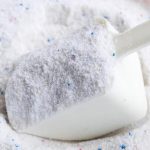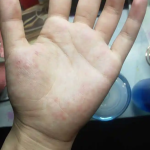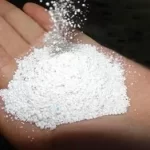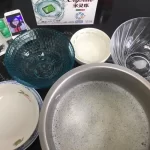What is biological washing powder?

Biological washing powder is Laundry powder with enzyme preparation added to washing powder. At present, the commonly added enzyme preparation is a protease, which has obvious effects on removing human secretions commonly found in collars and cuffs, as well as protein dirt such as blood, milk, grass juice and various foods.
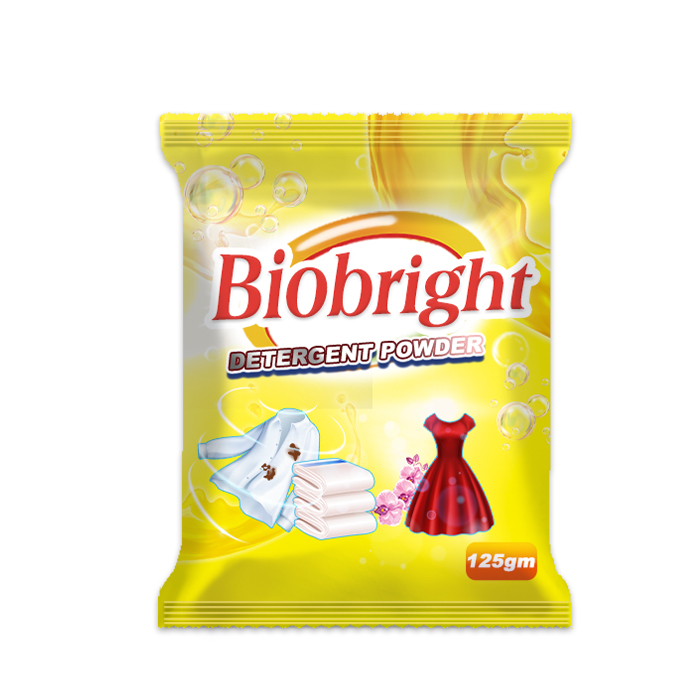
Best biological washing powder bulk
Don’t let your clothes lose their sparkle. Our bio washing powder features active plant-based, biodegradable ingredients. Takes on stains even at 30° leaving clothes with the delicate fresh fragrance of Eucalyptus & Lavender.
What is an enzyme?▼
Enzymes are found in all living organisms. Humans, animals and plants…all living cells produce enzymes and need them to sustain life and grow. However, enzymes are not living organisms themselves, they are special proteins and biological catalysts.
One of the functions of enzymes is to decompose various organic substances, such as proteins, carbohydrates, and fats, into simple small molecular substances. For example, enzymes in the body’s digestive system break down proteins, carbohydrates, and fats into various small molecules that can be absorbed by the body.
How do enzymes work in your laundry?▼
The main active ingredient of washing products is a surfactant, which removes stains by physical activities such as emulsification and solubilization. However, surfactants alone cannot remove all stains. In daily life, many insoluble macromolecular stains such as proteins, starches, oils and fats are difficult to remove on clothes. During the washing process, enzymes can decompose organic macromolecular stains that are difficult to remove into small molecular substances that are easily soluble in water, making the stain removal more thorough and the clothes cleaner.
How many types of enzymes are currently used in the washing and personal cleaning industry?▼
The enzymes currently used in the detergent industry mainly include five types: protease, amylase, lipase, cellulase and mannanase. Toothpaste and mouthwashes containing amyloglucose and glucose oxidase prevent the formation of plaque.
Why do some seemingly clean clothes have stains after being ironed or placed for a period of time? ▼
This strange phenomenon often occurs in daily life, this is because some organic macromolecular stains, such as milk stains, oil stains If it penetrates deeply, some simple detergents will only wash away the surface stains, while the deep stains remain in the fabric of the clothes, which looks clean, but cannot actually achieve deep cleaning. After high-temperature ironing or long-term storage, stains, such as oil stains, escape from the inside of the fiber tube again. Moreover, these difficult-to-remove organic macromolecular stains are sticky, such as starch stains, just like glue, which adheres dust and dirt particles in the air to the surface of the clothes, which further contaminates the clothes.

The use of lipase-added washing powder can effectively decompose these organic macromolecular stains into small molecules that are easily soluble in water, so they are easier to be taken away by the surfactant solution to achieve deep cleaning of clothes.
The stains on the collar and cuffs are difficult to remove, what should I do?▼
Collar and cuff stains and perspiration are formed by the adhesion of airborne dust and dirt particles by human secretions such as sebum and protein-structured dander. The joint use of protease and lipase can degrade this macromolecular sebum and dander into small molecules that can dissolve in water, thereby effectively improving the removal effect of stains on the front of the clothes. Warm water helps enzymes and other ingredients in laundry detergents work more efficiently.
Pre-treat the collar and cuffs with an enzyme-containing collar net, apply the collar net to the stains on the collar evenly, leave it for 10 minutes, and wash it normally with washing powder or detergent to remove it.
Do enzymes make clothes fade?▼
of course not. The action of enzymes has very high specificity. For example, protease can only decompose protein stains, lipase only works on triglyceride stains, and enzymes have no effect on dyes used in clothing.

Prevent clothes, especially pure cotton clothes from pilling?▼
Cellulase-added washing powder can be used, which can remove the cotton fiber fluff and microspheres produced by the friction of cotton-containing clothes after repeated washing and wearing, so that the clothes look clear in texture and bright in color, and the clothes can be worn for a long time. Can be as bright as new.
Are the colored particles in laundry detergent enzymes?▼
Some enzyme product granules are colored, while most enzyme granules are colorless and difficult to distinguish from other laundry detergent ingredients. Some washing powder manufacturers add colored particles as a sign of adding enzymes, telling consumers that this washing product contains enzymes, which can decontaminate more effectively. Just look for colored particles.
Will the use of enzymes cause skin allergies?▼
Contact with enzymes does not cause skin allergies, only inhalation of enzyme dust may cause allergies. Long-term experience and a lot of research work have shown that the use of enzymes in detergents will not cause allergies to users, because the coating material on the outer layer of the enzyme granules completely isolates the consumer from the enzyme, which has maximally prevented enzyme dust. It should be noted that many proteins can trigger allergies, such as spring pollen, dust mites in carpets, animal dander and baking powder. Symptoms of an enzyme allergy are similar to those of the common cold, so don’t be too nervous.
What should I pay attention to when using enzyme-added laundry detergent?▼
The enzyme is a heat-sensitive substance, and temperature is an important factor affecting enzyme activity. Therefore, the washing water temperature should be controlled at about 40 °C, and the washing powder should not be soaked in water above 60 °C, so as to avoid the loss of activity of the enzyme preparation, thereby losing the decontamination effect. Enzyme-added laundry detergent cannot be used to wash silk and wool fabrics containing protein fibers, because enzymes can destroy the protein fiber structure and affect the fastness and luster of silk and wool fabrics.
Copyright 2020, Hebei Guansheng Technology Co.Ltd All Rights Reserved
 Hebei Guangsheng Technology Co.Ltd
Hebei Guangsheng Technology Co.Ltd
 Hebei Guangsheng Technology Co.Ltd
Hebei Guangsheng Technology Co.Ltd
